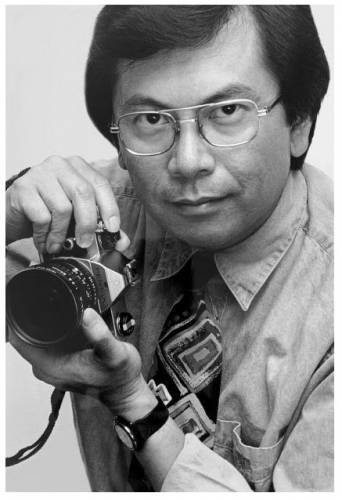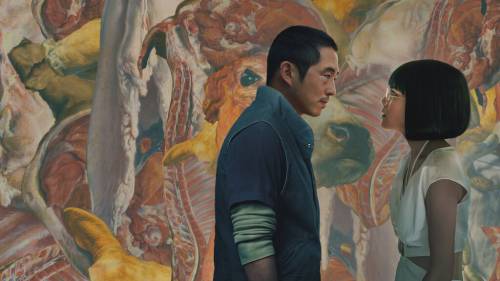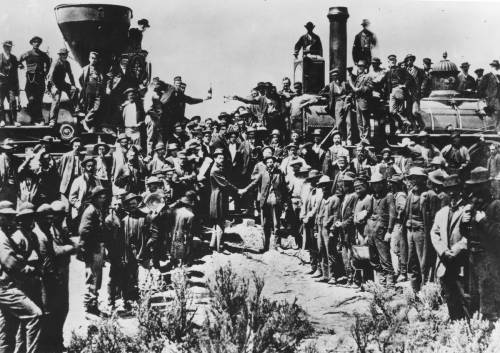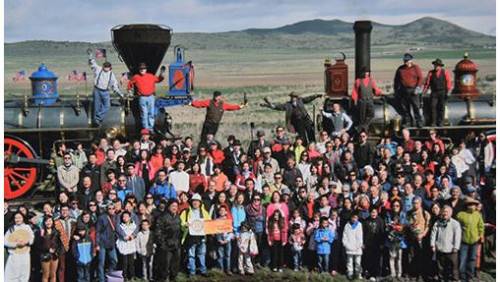
Corky Lee was an ABC, American born Chinese, a photographer and activist, for whom art and activism was one and the same, whose camera’s eyes gave witness to the nuanced and diverse Asian Americans, who said of himself “I’m ABC from NYC … wielding a camera to slay injustices against AAPs.” Corky grew up on the streets of Flushing, NY, where I navigated my own childhood.
Ken Chen, a journalist himself had a lunch interview with Corky in a Chinese restaurant in Flushing. Ken expected Corky, who knew those streets, to recommend a dish. Instead, Corky asked Ken for a recommendation. Corky, reading Ken’s slight disappointment said, “I’m Asian American. So, I’m a 100 percent authentic fake.”
What does it mean to be an Asian American?
What does it mean to be an Asian American Pacific Islander (AAPI)?
What does it mean to be an American?
What does it mean to be an authentic American?
In one sense, it is the question, “Who is an authentic American?” that led to the creation of AAPI.
This is what Corky means when he says to be an Asian American is to be an authentic fake, because the Asian American identity was created in response to the fact that all Asian Americans were labeled as inauthentic Americans.
Erika Lee, Director of the Immigration History Research Center at the University of Minnesota, wrote a book tracing the diverse histories of Asian Americans; she titled it “The Making of Asian Americans.”
The term “Asian American” was coined by activists Yuji Ichioka and Emma Gee in 1968, to replace the derogatory term “Oriental,” Asian American is a rally cry, a call for radical cross-racial and ethnic solidarity building on the 1960s black liberation movements. Pacific Islanders, is an expansion of that solidarity with people originally from the Pacific Islands, which includes at least 20 distinct people groups. AAPI is a call to acknowledge our shared histories, our distinct stories, and to unite to for collective liberation.
But words get unmoored from their original intention. Words get co-opted. When a month is dedicated to AAPI, are we forgetting the diversity of stories and the call to liberation? And are we essentializing it, ethnicizing it, as if there is one Asian language, and one Asian culture?
Dear readers, I do not speak Asianese. I speak Korean (& not as well as I want to).
There is no authentic Asian American.
But in modern culture there’s no greater sin than inauthenticity!
(I read that in an Instagram filtered post )
Be true to yourself!
Find your voice!
Be authentic!
But when authenticity is about authentication, then it is a form of power.
It’s about who gets in, or what you must do, to get in.
The question of authenticity is really a question of identity and performance. Then it matters: Who is asking the question? Who is the interrogator? Who is trying to authenticate my identity?

Beef is a recent Netflix hit on how two strangers can become mortal enemies through the escalation of their uncontrollable rage.
A friend of mine said they couldn’t keep watching two people making selfish decisions destroying everything they touch. I said, “Aren’t you watching the news?” But if you can stomach people self-destructing, and watch it till the end, you will know what I mean when I say it is a modern spiritual journey. Light spoiler. They end up in the desert. And you know when people go into the desert, they are going to meet the devil and God. But this is me getting excited about a well-told story, the way a car junkie can talk about a well-put-together car for hours, so let me get back to the topic.
The two protagonists, or antagonists, are Asian-Americans. Steven Yeun plays Danny, the Korean American construction worker, and Ali Wong plays Amy, a wealthy Chinese American florist.
An interviewer said to Steven Yeun that he loved the fact that his character, Danny, was authentic to his Korean heritage, showing Danny meeting his cousin in the Korean restaurant, eating Korean food, daenjangjigae—not sure that was the dish, but that’s my favorite, so that’s what I saw and smelled—and that this authenticity proved true yet again that if you tell the particular story than you tell the universal story.
Steven replied, “That depends, who is asking the question?” Who is saying, “Tell your particular story?”
Because authenticity, authentication, identification is a form of power.
So, who is asking?
– Are you the Son of God, said the devil.
-If you are the Son of God, said the mockers, come down from the cross.
-Are you the authentic messiah? We’ve had so many fakes…
-And obviously, you are a fake, because you don’t fit our messiah-mold
Paul’s letter to the Ephesians is about powers and principalities. In the letter, Paul declares that in resurrection of Christ, God overcame the most powerful form of political power—death—and thereby put Christ above all powers and principalities (i.e. put them in their place).
In Ephesians 2:11, Paul describes how one of the ways powers and principalities exert their will is by authentication/identification.
So then, remember that at one time you Gentiles by birth called “the uncircumcision” by those who are called “the circumcision”—a physical circumcision made in the flesh by human hands—
Who is the authenticator?
The “circumcision” is the one who calls the others “uncircumcision.”
-Well, why do you get to call them that?
-Because I’m the circumcised?
-And what is that?
-The not-not circumcised.
Their very power to call them uncircumcised lies in the fact that they must call them uncircumcised.
Yeah, it’s all circular.
Before this authentication, “the uncircumcised” didn’t go around calling themselves “uncircumcised” because it wasn’t a matter of identity. Their uncircumcision was a physical feature of no real significance, until it was made an identity by those who needed that negation to define themselves as the circumcised.
Again, all so circular.
But because those who defined these identities had the power to make it stick, these mere physical differences became metaphysical, essential, political, social differences. Words became sticks and stones, and bricks, and ropes, and bullets, and redlining and difference of life expectancy.
The Greek word Paul uses for “who are called” is legomenoi. Paul uses that exact form in 1 Corinthians 8:5-6, saying,
“Even though there may be so-called [legomenoi] gods in heaven or on earth—as in fact there are many gods and many lords— yet for us there is one God” (1 Cor. 8:5–6)
So, Paul, are these so-called gods real or not?
Both.
They are not real. There is only one God.
But when those in power gets to call things, it becomes real.
How?
By filling out the definitions for the word they created. Derogatory definitions.
Did you catch the list of characteristics of the uncircumcised?
Paul is repeating the rhetoric of the circumcised about the uncircumcised.
Those uncircumcised, they are:
- strangers to covenant,
- no hope
- without God
- far off
- strangers and aliens
Don’t these words sound tragically familiar?
Aren’t such judgmental, hate-filled types of rhetoric still memes in our culture?
Yellow, yellow peril, coolie, dirty, chink, heathens, rapists, terrorists…I don’t need to go on.
I remember when I was junior high, returning from our Wednesday bible study to the first house my family bought in U.S., a ranch home in Little Neck, NY. And then seeing, on our front door, red graffiti hissing, “Go back home chink.”
And no matter how hard my brothers and I tried to scrape it off, we couldn’t erase the trace of those words.
But these are not just slurs.
These slurs are made into a social reality by laws.
Laws codify our racism, turn words into sticks and stones,
our naming into REAL ID.
The Chinese Exclusion Act of 1882 was the first explicitly racist immigration policy. President Chester A. Arthur said when signing that act, that it will “placate worker demands and assuage prevalent concerns about maintaining white ‘racial purity.’” It wasn’t repealed until 1943.
Erika, the historian, says that because of this exclusion, Asians were the first undocumented immigrants. In the 1900s special deportation agents were named “Chinese catchers.” Lawmakers in the 1920s wanted to erect a “Chinese wall” along the Mexico border because Chinese undocumented immigrants were flooding America.
A 1904 Buffalo newspaper story told how traffickers along the Canadian border disguised Chinese as Native Americans, “dressed in ‘Indian garb’ and carrying baskets of sassafras.”
Authentically fake.
Takao Ozawa was a Japanese immigrant who sued to become a citizen of the United States on the grounds of the Naturalization Act of 1790, which said citizenship was only for “any Alien being a free white person.” Ozawa challenged the definition of “free white person.” The Supreme Court ruled against Ozawa on November 13, 1922, the Justice George Sutherland saying, “to adopt the color test alone would result in a confused overlapping of races and a gradual merging of one into the other, without any practical line of separation.” He said citizenship was for whites and that white should be “confined to persons of Caucasian Race.”
-I get to call who’s white, because I’m white!
All so circular.
Today, you don’t have to be white to be a citizen anymore.
But you still have to be white to be authentic American, right?
I am still often asked, after I say I’m from NY, “Where are you really from?”
And I answer, “You got me, from Narnia.”
The from-from question is telling me to be authentic. But Who’s asking?
Paul says Christ’s work on the cross was the breaking down of the dividing walls, abolishing the law with its commandments and ordinances, laws and walls that turn name-calling into a social reality.
Continuing from Ephesians 2:11, Paul describes the atonement work of Christ on the cross with these words:
But now in Christ Jesus you who once were far off have been brought near by the blood of Christ. For he is our peace; in his flesh he has made both groups into one and has broken down the dividing wall, that is, the hostility between us. He has abolished the law with its commandments and ordinances, that he might create in himself one new humanity in place of the two, thus making peace. (Ephesians 2.13-15)
Paul has in mind the great edifice, the Temple. In the center of the Temple, the Holy of Holies, with the most serious authentication process: if you are not the priest chosen, you will die, they will drag you out with the rope tied around your waist (in this case, if the bell stops ringing, a soul is lost). After the Holy Veil is the Holy Place, then the court of Israel, then the court of Women, and far out there in the nosebleed section, the Court of Gentiles.
But the story of Jesus says that when he died, the Holy Veil was torn. That fabric tearing doesn’t mean that now anyone can enter the Holy of Holies, but that the spirit of God is loose, that the Spirit of God is everywhere, everything, all at once. It means there’s no center; so the language on who gets in, who is excluded, the words of near and far is now moot. Authentication not needed. Jesus’ crucifixion deconstructed the racist and sexist theologies, ideologies, and IDs.
Circumcision and uncircumcision authentication no longer mattered when all have access to God where they are and as they are.
In this expansive community, new words are given.
Like: One New Humanity.
Word of belonging.
Identities not a condition for community. But belonging as the condition of all. And our identities as explorations of the histories of our ancestors and the future we desire for us and our children. Identities are not essences but explorations.
The old “characteristics” of the uncircumcised are proven false. New descriptions of belonging are declared!
So now you Gentiles are no longer strangers and foreigners. You are citizens along with all of God’s holy people. You are members of God’s family. Together, we are his house, built on the foundation of the apostles and the prophets. And the cornerstone is Christ Jesus himself. We are carefully joined together in him, becoming a holy temple for the Lord.
(Ephesians 6.19-22)
Citizens, a holy people, members of God’s family. You don’t have to authenticate yourself to get into the Temple because You are the Temple.
Corky knew he wanted to pick up the camera when he, as an elementary school kid, saw the famous photograph of the completed Transcontinental Railroad, taken by Andrew J. Russell at Promontory Summit in Utah on May 10, 1869.

There were no Chinese in that story picture, although up to 20,000 Chinese laborers gave their bodies to that national project.
The picture purporting to be an authentic story of America, was a fake!
Lee eventually went to Promontory Summit, and recreated Russell’s photo with the descendants of those same Chinese laborer. A fake, but authentic.
Authentically fake.
He said he recreated “in an effort to show that Asian American history is American history.”

So, what do we do?
For those who call themselves American, who call themselves white American.
I say to you: know your history.
AAPI history, that’s your story too. It’s not just mine. It’s your history.
And as to my AAPI siblings, we have to tell more of our stories and not be ashamed of them. Actually, I’m speaking more to myself.
I was taught to be ashamed of my story, the way I was ashamed when my mother would haggle the price of clothing in Macy’s like she was back in Seoul’s namdaemun market, no matter how many times I said to her the sticker is the final price. She said, “Nothing final, until I say final.”
Grace M Cho, in her memoir titled Tastes Like War, tells about how she found her way back to her mother through food. Tastes Like War is a phrase her mom said when she tasted powdered milk. It was only later Grace learned that her mom said it is because in post-war Korea, her mom scrounged for food in American military base trash, half-eaten hot dogs, and what she thought was spilled milk was powdered milk. Powdered milk brought back the smell and bitter taste of war.
Grace talks about how she had three mothers in her single mother.
The first mother, the mother of her childhood, they just immigrated, her mother trying to prove herself American enough to accepted by the white suburbans who had already decided she was not…the perpetual other.
The second mother, the schizophrenic mother, who lost her sense of self. Who never left the house. Who heard many voices. Who spoke in many voices.
The third mother emerged when Grace started cooking for her. And the taste of food brought back memories. And over food her mother would tell her stories.
She writes:
“The third mother was the mother of my thirties, who gradually accepted me as her cook and taught me to prepare the dishes my grandmother once cooked for her. And slowly, through eating these foods, she found a way home. Through cooking the foods of her childhood and getting a glimpse into her early, life, I found one too.
Feeding her brought me closer to her schizophrenia and allowed me to break bread with her voices. I came to understand that the voices were not alien to her, but part of her, perhaps voices from a suppressed and violent family that were searching for a witness. They were probably there all along in the first mother. Mute. Hungry. Lying dormant in her mind and posed to leave traces of a fractured history on the future. Through the act of communion with her voices, I learned to stop being afraid of them and listen to what they had to say.”
All those voices were her voices.
Samuel Son is the Manager of Diversity and Reconciliation at the Presbyterian Mission Agency. This piece was originally preached as a sermon for a PCUSA staff chapel service in May 2023 for AAPI Heritage Month.